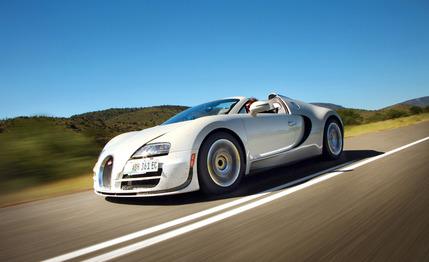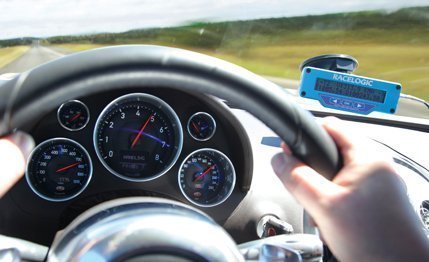
 First Drive Review
First Drive Review
The sad truth is that the Bugatti Veyron 16.4 is simply too fast for this world. You just can’t go cruising around at something like 20 mph faster than a pole-winning qualifying lap for the Indy 500. But if you must find a place to blast around in one of these land-bound rockets, you could do worse than Eastern Cape, South Africa, or at least the most remote portions of it. Here, termite hills provide some of the only landmarks by which to navigate, and the savannas and badlands are covered in a thick blanket of silence.
And that’s exactly why we and a couple of Bugatti engineers have come here for a final preproduction evaluation of the newest and likely final variation on the Veyron 16.4 theme, the Grand Sport Vitesse. Where a rear license plate typically would be found, the Vitesse carries a yellow placard that reads: HIGH SPEED TEST VEHICLE APPROVED BY GOVERNMENT. And as much as we might want this Veyron, we think we might want that placard even more.
But we digress. The Vitesse (French for “speed”) is a combination of the two major existing Veyron variations: the Super Sport, which makes 1200 horsepower from its quad-turbo 8.0-liter W-16, and the targa-topped Grand Sport. Somehow, Bugatti resisted the urge to call it the Veyron 16.4 Grand Sport Super Sport.


Our first encounter with the Vitesse is on its approach. We hear it, a deep and distant rumble, before we see it. It could be a brewing thunderstorm or a herd of stampeding elephants. As soon as we make out two lights peeping from between the horizon and the tarmac, the sound shifts to a powerful staccato of 16 pressure-charged cylinders. Just a few seconds later, we can feel the air that’s being punched out of the way, and the engine’s sound changes again, this time into an extremely loud, jetlike streaming as the 4400-pound missile rushes by.
Behind the wheel of the white prototype is Jens Schulenburg. A Bugatti engineer for 10 years (yes, it’s been that long since the rebirth of the brand), Schulenburg does the final quality check. At the end, he will give his approval to what passes for “production” in this most rarefied corner of automobiledom.
The Grand Sport Vitesse has to prove, over the course of thousands of miles across Africa’s quietest regions, that the giant W-16 fires up properly even when drinking lesser-quality African fuel; that all the complicated mechanical, thermodynamic, and aerodynamic processes still work perfectly even in harsh conditions. Conditions including those to which no Vitesse driver will likely subject his treasure, such as whipping up dust while driving on gravel roads, along with the more likely Bugatti-driver endeavors such as flying along at high speeds, repeatedly stabbing hard at the brakes, and incessantly accelerating at full throttle.